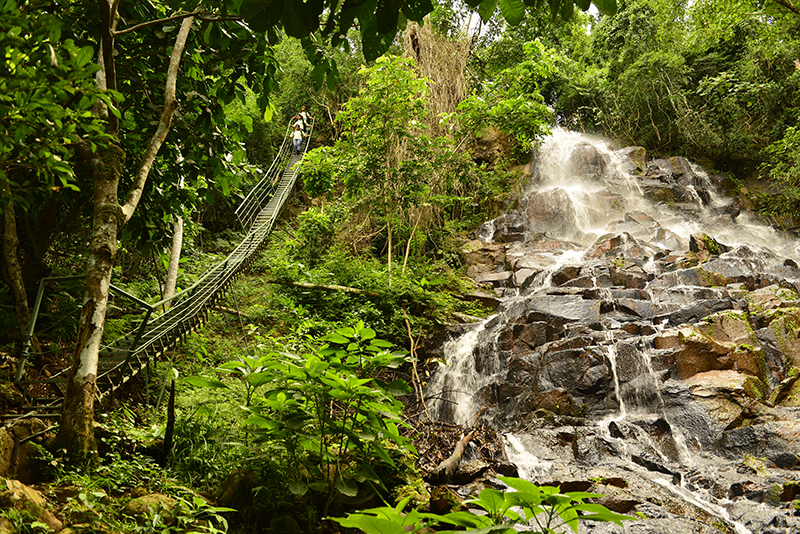EASTERN
ZONE
Departments: Alto Paraná, Caaguazú, Caazapá y
Canindeyú
Departments: Alto Paraná, Caaguazú, Caazapá y
Canindeyú


In the country’s Eastern Zone, you can get to know and walk through protected wild areas, the magnificent Monday Falls, the majestic Itaipu binational hydroelectric dam, or go for walks and do some shopping in Ciudad del Este or Salto del Guairá.
Tourist can also visit the towns of San Rita, Hernandarias, Presidente Franco, Ñacunday, among others.
In the Alto Paraná Department, the Itaipu Binational Dam is one of the wonders of the modern world. The Itaipu (which means “sounding stone” in Guaraní) hydroelectric dam is a binational dam between Paraguay and Brazil, on their border over the Paraná River. Up to 2011, it was the largest hydroelectric plant in the world, until it was surpassed by the Three Gorges Dam in China. However, it is still the plant with the largest production of electrical energy in the world. The dam has a maximum height of 196 meters, the equivalent of a 65-story building. Its construction consumed 12.3 million cubic meters of concrete, while the iron and steel used would allow the construction of 380 Eiffel Towers. Pretty impressive!

The Tati Yupi Refuge is an environmental protection unit created and maintained by Itaipu on the Paraguayan side of the dam’s premises. It is open to tourists and has 2,245 hectares of natural forests. Its paths take visitors through ecosystem of rich fauna and diversified flora. You can do so in the company of guides on bicycles, horse-drawn carriages, or floats.
The majestic Monday Falls can be found in the city of Presidente Franco. They are made up of three mighty waterfalls, each 40 meters high. They are located near the border with Brazil and Argentina, 10 km from Ciudad del Este. Paths through the vegetation take visitors to viewpoints and walkways from where it is possible to contemplate the river’s 40-meter depression. For those who like adventure, the rocky walls are perfect for rappelling, trekking, and mountaineering next to the waterfalls. It is an incomparable experience. The attraction is inside the Monday River Falls City Park, which offers space for camping and meals.
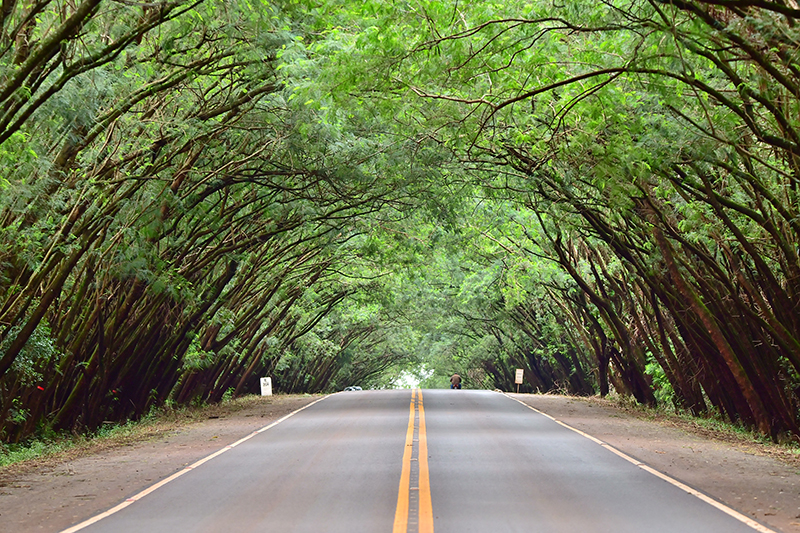

The Moises Bertoni Scientific Monument is a museum located in the middle of the forest which is dedicated to remembering the Swiss scientist and writer Moises Santiago Bertoni. Here, the tourist can be surrounded by an ecosystem with incredible variety and exuberance. While listening to the trill of the birds, among them the guyrá Campana (bell bird), the tourist will be able to walk under natural palm hearts and among tree ferns, discover mushrooms, wild fruits and feel nature’s pulse. Next to the museum, one can observe and experience how the natives of the mby’a group, ancestral inhabitants of Paraguay, live.
In the Paraná region, 42 km from Ciudad del Este, the visitor cannot fail to visit the Guarani World Experience Circuit. It is located within the protected wild area of the Yguazu Nature Reserve, within one of the last remnants of the Alto Paraná Atlantic Forest. It is a high-end integrated tourist center that combines ecotourism and the Guarani culture. Inside, one can experience the Guarani worldview during a tour guided by members of the community in the area, the mby’a Guarani.
A visit to the Eastern Zone of the country cannot be complete without a shopping tour in Ciudad del Este. This cosmopolitan and peculiar city became the second commercial center in terms of business volume in the world. It is quite an adventure and a box of surprises to go through its innumerable malls and stores in search of clothes, jewelry, drinks, toys, perfumes, computers, and electronic items. Prices are competitive, and if one purchases products from authorized representatives, one can be sure of their legitimate origin and quality.
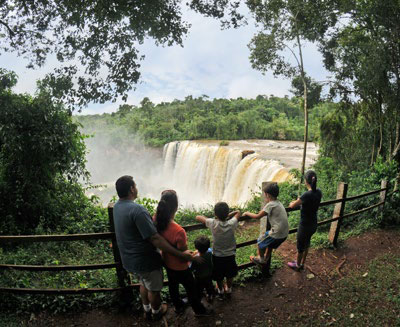
Located in the far east of the Eastern Region, Ciudad del Este is the capital of the Alto Paraná department, which is linked to Brazil by means of the Friendship Bridge over the Paraná River.
The Itaipú dam, one of the largest hydroelectrical dams in the world, is close by, as are also the Iguazú Falls, which are natural wonders of the world. Likewise, the unmissable Monday Falls can be found 8 km south of the city.
Ciudad del Este is known for being a commercial and industrial city, as well as the most important shopping destination in the country, with a high-level hotel infrastructure, modern shopping malls, and entertaining nightlife.
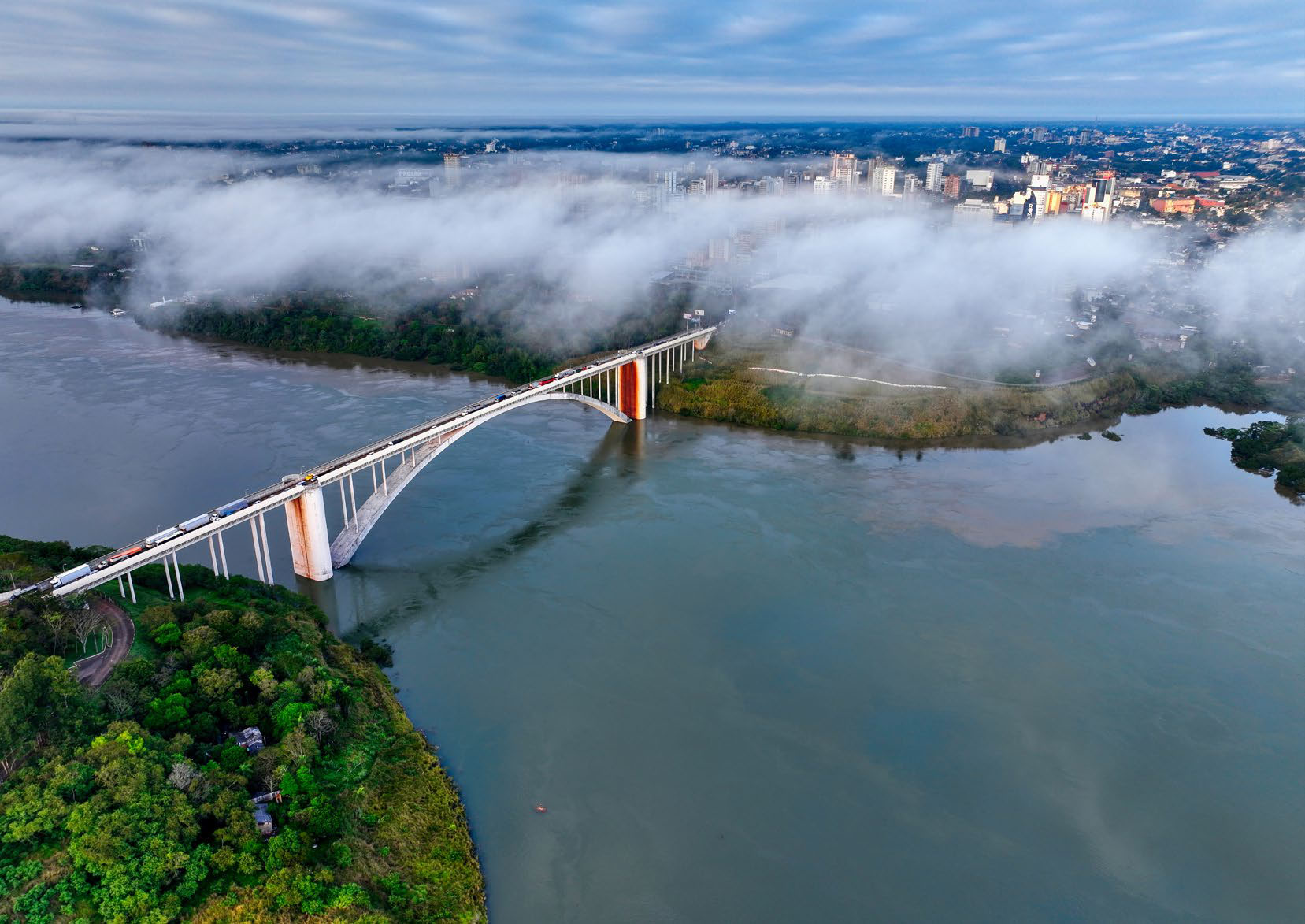
Capital: Coronel Oviedo
Caaguazú is known both for its dynamism and its central location, at an important junction. Its most important natural attractions are the Guayaqui Park and the Iguazú lake, which is ideal for canoeing, fishing or simply relaxing at its beaches.
Other sites of interest include the San Joaquín hills, and the Morombí natural reserve, a wetland protected area that is blessed with many streams and rivers, multiple tree species and animals such as tapirs, deer, and peccaries. The old manor and Arias manor are also popular attractions for tourists.
Caaguazú is also known as the wood capital of Paraguay, thanks to its artisanal wooden toy, furniture, and carved sculpture production, which is carried out by its indigenous communities. Besides Coronel Oviedo, other important cities in the department include San Joaquín, Juan Manuel Frutos and San José de los Arroyos.
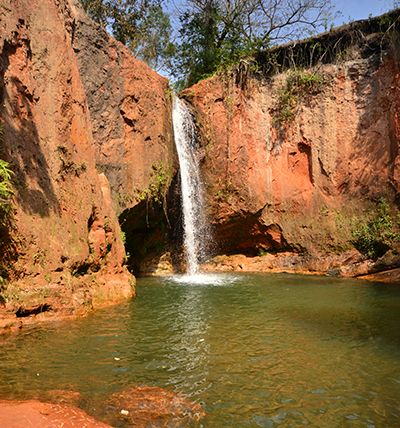
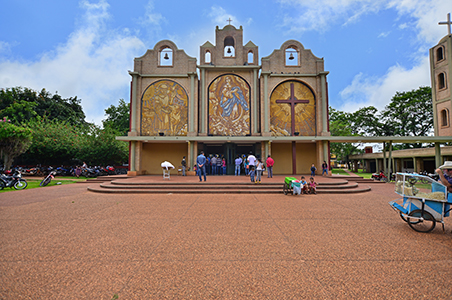
Capital: Caazapá
Its lagoons, swamps, rivers, waterfalls, forests, and cliffs, together with hills, such as Tupasy, Curusú, Mbatovi, and others give Caazapá its great landscapes.
Main cities include the historical town of Caazapá, which was founded in 1607, and includes an old Franciscan church and colonial buildings. There is also Yegros, which welcomed immigrants from many different European countries, and Mariel, also renowned for its colonial buildings as well as its old train station.
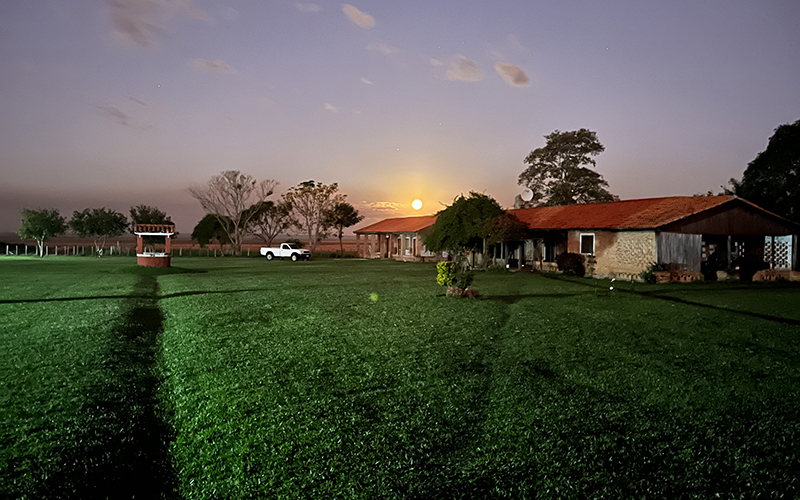
Capital: Salto del Guairá
In the Canindejú Department, its capital, Salto del Guairá, is a thriving commercial center animated by sizeable groups of tourists who come from nearby Brazilian cities to shop. Large shopping centers, hotels, restaurants, and Brazilian-style steakhouses support the daily activities of visitors.
In the area you, can also find the Puerto Alika’i or Monkey Port, on the banks of the imposing Paraná River, the second longest and mightiest river in South America, after the Amazon. Here, one can take boat trips, go fishing, camping, enjoy the gastronomy, and visit the nearby Carapá Biological Refuge; the Mbaracayú Binational Biological Refuge, another one of Itaipu’s protected wild areas, close to the urban area of Salto del Guairá; and the Mbaracayú Forest Nature Reserve, a private protected wildlife area, managed by the Moisés Bertoni Foundation, which is prepared for visitors with lodging, Internet connection, food service, especially typical Paraguayan dishes.
In the district of Ype Ju (Black Duck), there are about 40 waterfalls that are characterized by their extraordinary beauty. Here, visitors hike, abseil, camp, and carry out a myriad of other activities. Among these falls, Salto Itá Camby stands out, one of the most spectacular in the country. It is located a little more than 8 km from the center of Ype Jhú. Its fall is formed by the torrent belonging to the Aguará stream.
Tours to visit the falls depart from Ype Ju and can last a whole day.
